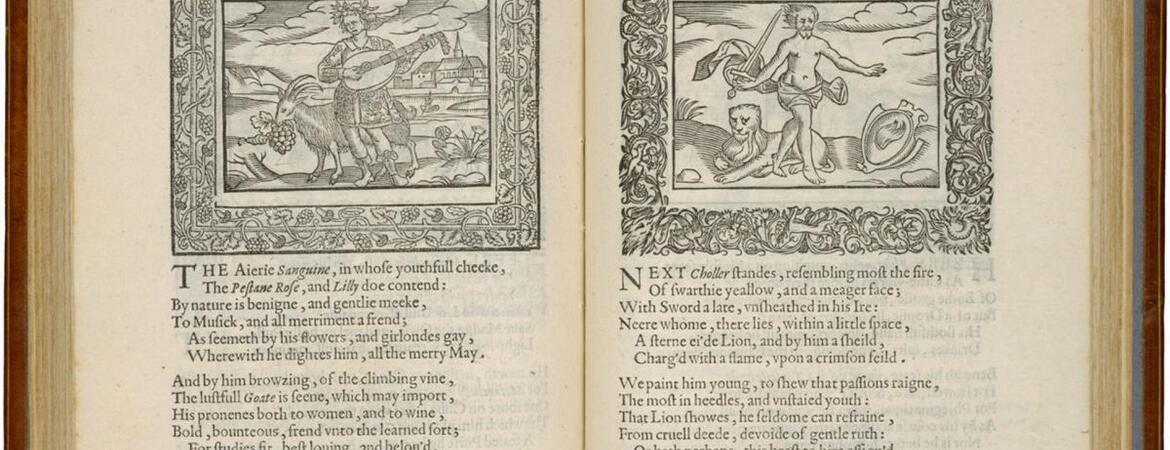
William Shakespeare (1564-1616) created characters that are among the richest and most humanly recognizable in all of literature. Yet Shakespeare understood human personality in the terms available to his age—that of the now-discarded theory of the four bodily humors –blood, bile, melancholy, and phlegm. These four humors were understood to define peoples’ physical and mental health, and determined their personality, as well.
The language of the four humors pervades Shakespeare's plays and their influence is felt above all in a belief that emotional states are physically determined. Carried by the bloodstream, the four humors bred the core passions of anger, grief, hope, and fear—the emotions conveyed so powerfully in Shakespeare’s comedies and tragedies. Curator Gail Kern Paster explains “The four humors were an early typology for human personality. Shakespeare uses them, even as he transcends them, to create the vivid characters whose emotions continue to fascinate and delight us.”
“And there’s the humor of it”: Shakespeare and the four humors explores the role played by the four humors in several of Shakespeare’s most beloved plays through beautiful imagery and rare books from both the National Library of Medicine and the Folger Shakespeare Library, and examines more modern interpretations of the four humors in contemporary medicine.
This exhibition was developed and produced by the National Library of Medicine, National Institutes of Health and the Folger Shakespeare Library.